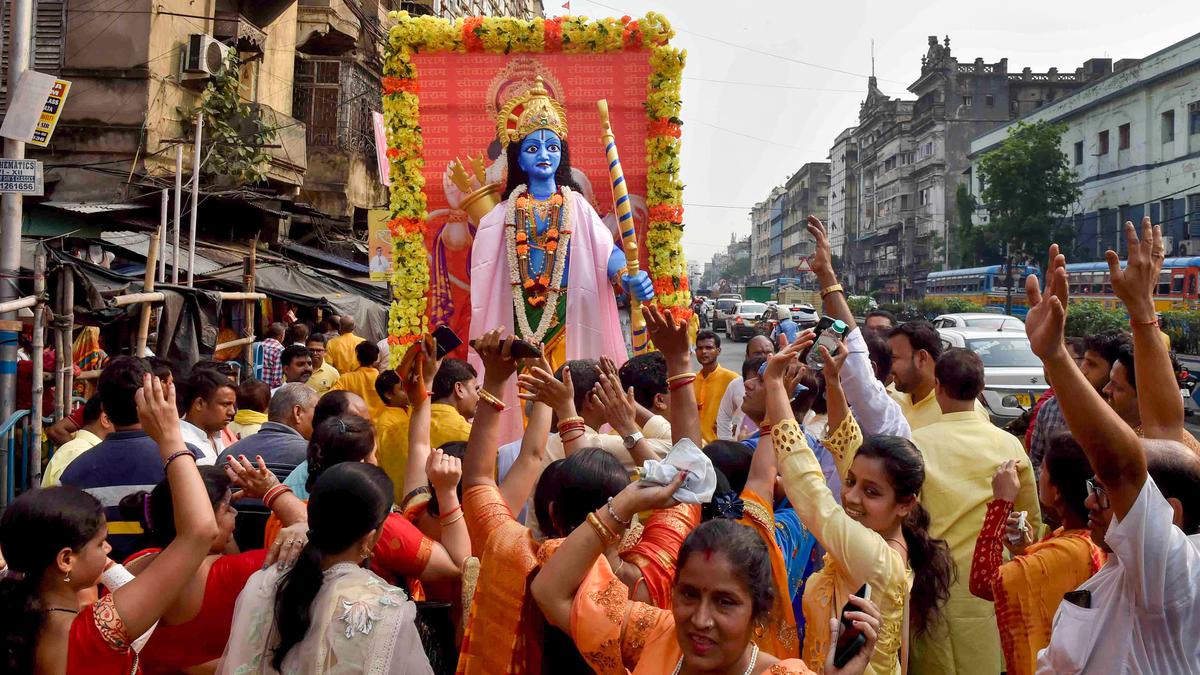
In West Bengal, politics over Ram Navami processions a new phenomenon Premium
The Hindu
A section of leadership of both the BJP and the Trinamool feels that they will gain from the religious polarisation in Bengal.
Celebrating festivals comes easily to the people of West Bengal and the State is often referred to as the land of “ Baro mashe tero parbon (13 festivals in 12 months)”. However, over the past few years, as religion and festivals have got entangled in politics, the aftermath has left a trail of mistrust and violence.
The anticipation of these festivals puts the administration on alert and political leadership across the spectrum starts making statements warning people about the possibility of a communal flare-up. Even when she was on a 30-hour dharna accusing the Centre of depriving the State of funds, West Bengal Chief Minister Mamata Banerjee kept warning the people over the possibility of ‘ danga’ (riots) during Ram Navami this year. These warnings did little to prevent the violence at Shibpur in Howrah and Rishra in Hooghly. By the time the administration was bracing to contain these incidents, the Calcutta High Court directed the State to deploy Central forces during Hanuman Jayanti scheduled for April 6 and urged political leaders to refrain from making any statements relating to the festival.
Ram Navami and Hanuman Jayanti processions are a new phenomenon, not only in the political arena, but also in the religious setting of West Bengal. The spike in such processions has coincided with the rise of the BJP as the main Opposition party since 2016. The frantic display of religiosity in these processions where thousands, particularly youngsters, participate amidst deafening music is often a recipe for disaster, particularly when such a procession passes neighbourhoods inhabited by citizens of a different community.
In the past there have been communal incidents triggered by such processions, particularly in Barrackpore, Howrah and Hooghly. These are densely populated working class neighbourhoods comprising people of different communities who had migrated to the State to work in mills and industrial units on both banks of the river Hooghly.
With every passing year the number of such processions has increased and now such processions are organised across the State. These processions and the resultant communal divide helped the BJP and Hindutva groups create polarisation and reap political dividends in the 2019 Lok Sabha polls, when the saffron party won 18 of 42 Lok Sabha seats.
Unlike the Left parties, the Trinamool Congress has never been shy of flirting with religion and its leadership hardly misses any opportunity to connect with the masses using festivals as a tool. The Trinamool leadership also sensed an opportunity and its leaders also started organising Ram Navami processions.
It is also strange that while the Trinamool leadership claims that Ram Navami processions are not part of the culture of the State, yet no attempt is made by the police to stop these processions. In fact, some police commissionerates shared greetings of Ram Navami from their social media handles. In several places across the State, Trinamool leaders and supporters are seen in these processions.













